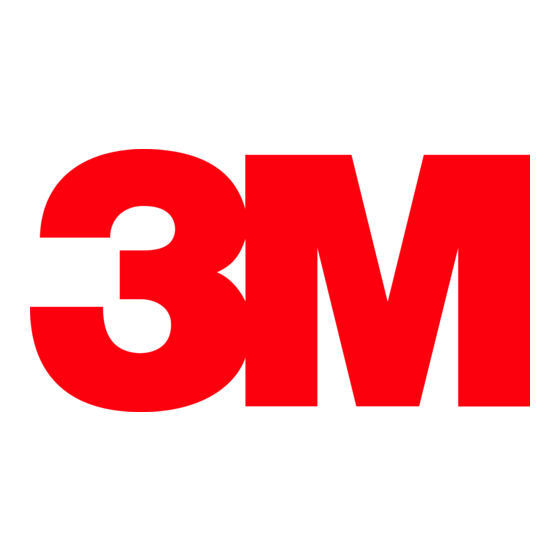3M HEADSET C1060 Informacje o usłudze - Strona 10
Przeglądaj online lub pobierz pdf Informacje o usłudze dla Zestawy słuchawkowe 3M HEADSET C1060. 3M HEADSET C1060 18 stron. Wireless intercom system
Również dla 3M HEADSET C1060: Podręcznik z listą części zamiennych (14 strony), Podręcznik programowania (5 strony)

Theory of Operation and Diagrams
Menu Mic Input
Audio from the menu sign may come from one of two
sources: a combination speaker/microphone (the
MENU SIGN SPEAKER) or a separate dynamic
microphone (the MENU MIC). The MIC/SPKR
jumpers J1 and J2 must be set accordingly; both must
be set to the MIC position if a separate outside mic is
used, to the SPKR position if a combination outside
speaker/mic (OSM) is used. Depending on jumper
positions, mic input is routed to the mic amplifier,
through the amplifier and its Menu Mic Sensitivity
control and then:
To the monitor speaker amplifier via the MON IN
S
volume control, through the monitor speaker
amplifier and the Master Monitor volume control
to the monitor speaker
Through the transmit amplifier to the TXMT
S
&TXMT LOGIC for transmission to all headset
receivers, and to output connector pin 9 for use in
cross-lane applications
Base Station Configuration Jumpers and
Switches
Configuration Jumpers
Jumpers J1 and J2 are used to configure the base
station for use with either a separate outside
microphone or a combination outside speaker/mic
(OSM). Unlike jumpers J3, J4 and J5 which affect
logic input levels, jumpers J1 and J2 simply switch
the microphone amplifier inputs to either the
microphone or OSM. Set both jumpers to jumper pins
2 and 3 for use with a separate outside mic, or to
jumper pins 1 and 2 for a combination speaker/mic
(OSM).
Jumper J3 is used to configure the base station for use
in a cross-lane, dual-lane communications system. In
such a system, one base station must be set for lane 1
frequency communications, the other base station
must be set for lane 2 frequency communications.
Jumper J3 pins 1 and 2 (forcing the related logic input
high) for lane 1 configuration. Jumper J3 pins 2 and 3
1-6
Wireless Intercom System
(forcing the related logic input low) for lane 2
configuration. Whenever any jumper is changed, you
must press the base station RESET switch to program
the new jumper setting into the base station
microprocessor.
n Note
It may also be necessary to re-program system
headsets, depending on system configuration.
Refer to the Installation Instructions for more
information.
Jumper J4 is used to configure the base station for use
with either a presence type vehicle detector or a pulse
type vehicle detector. Jumper J4 pins 1 and 2 (forcing
the related logic input high) for a presence type
detector. Jumper J4 pins 2 and 3 (forcing the related
logic input low) for a pulse type detector. Whenever
jumper J4 is changed, you must press the base station
RESET switch to program the new jumper setting into
the base station microprocessor.
Jumpers J5 and J6 are used to configure the base
station so that it can in turn, program the headsets for
standard (talk, then listen, then talk etc.)
communications or for duplex (simultaneous talk and
listen) communications. During standard
communications, headset receiver output is muted
during talk transmissions. During duplex
communications, headset receiver output is not muted
during talk transmissions. The headset receiver
mute/not mute (standard/duplex) command is sent to
the headset logic during headset
programming—determined by the jumper J5 setting.
Whenever any Jumper is changed, you must press the
base station RESET switch to program the new
jumper setting into the base station microprocessor.
n Note
When any jumper is changed, you must also
reprogram the system headsets. Refer to the
Installation Instructions for more information.
E 3M 2003
March
